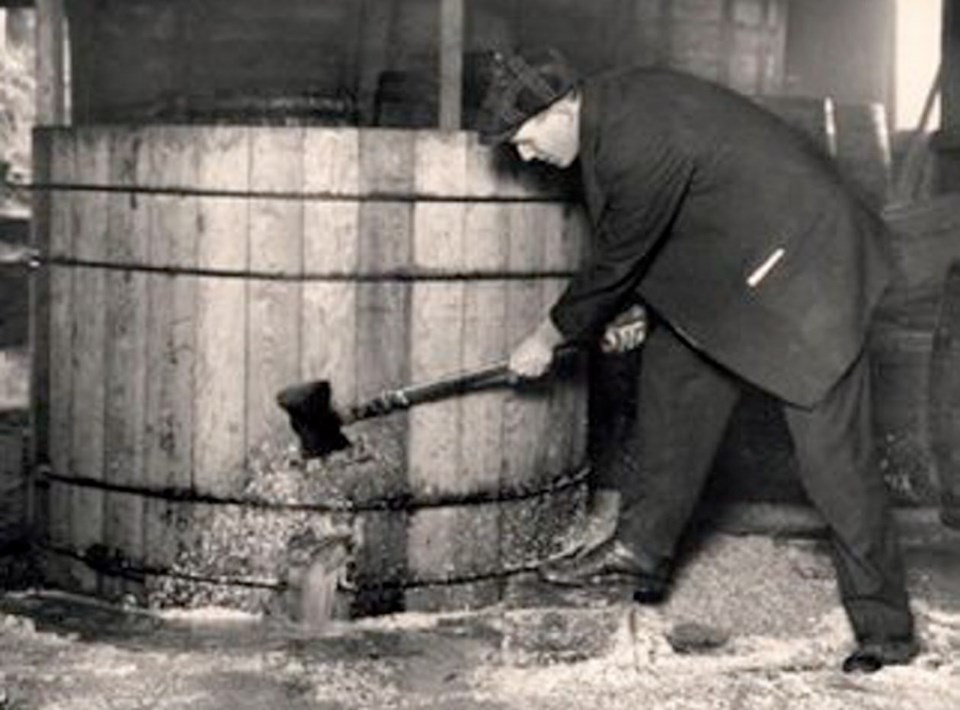Rum-Runners and Renegades: Whisky Wars of the Pacific Northwest, 1917-2012
By Rich Mole
Heritage House, 142 pp., $9.95
______
British Columbia’s role in the American Prohibition years is almost forgotten today, perhaps because it occurred quietly, and under the cover of darkness whenever possible.
Rich Mole, a former Victoria resident who has turned into a prolific writer and historical researcher, is doing all he can to correct the oversight. His work gives us a better sense of how we arrived at today’s attitudes toward alcohol.
Rum-Runners and Renegades starts with the arrival of Prohibition in B.C., a change that did not have the impact that was intended. Prohibition lasted here for just four years, and it can be argued that access to liquor became more difficult after it ended, and the government took charge of sales.
When we became wet, Washington state remained dry — and that created some great business opportunities for British Columbians. Mole says that thousands of us made money directly or indirectly as a result of Prohibition south of the border.
More than 100 vessels, most of them owned by Canadians, were involved in the rum-running trade. Their owners engaged in a risky business, to be sure, but most made nice profits all through the Roaring Twenties, when Washington remained dry, officially at least.
Not everyone made their money doing daring runs across the Juan de Fuca Strait. Those boats meant extra work for the boat builders and repair shops, since these vessels neded to be maintained.
Much of the work on the Canadian side could be done in the open, since nothing illegal was being done. As Mole notes, heavy wooden cases could be moved from a warehouse at Wharf and Fort streets, then loaded onto boats in the middle of the day. Canadian customs officers collected an export tax, and everything was fine.
One of the most prominent exporters in Victoria was Johnny Schnarr, who used the proceeds of his work to build a two-storey oceanfront home on Telegraph Bay. It paled in comparison to Casa Mia, a 21,000-square-foot manison on Southwest Marine Drive in Vancouver. Casa Mia remains a showpiece today.
Prohibition also led to crime, with pirates roaming offshore, and murderers following the trail of liquor.
Mole also deals with the years since Prohibition, which have seen a gradual loosening of liquor regulations. Gone are the days when liquor was kept behind the counters, and we had to ask the staff to retrieve our purchases. Gone, at most hotels at least, are the signs saying “men” and “ladies and escorts” at the doors of beer parlours.
The first cocktail lounge in the province was opened in the early 1950s in the Strathcona Hotel. We have also seen laws changed to allow aborigianls the same rights, in terms of alcohol at least, as the rest of the population. More recently, private stores have been allowed to compete with the government-operated ones.
This is a companion volume to Mole’s Scoundrels and Saloons: Whisky Wars of the Pacific Northwest, 1840-1917, which was published last fall. Together, the two books shine a new light on attitudes to alcohol consumption through almost two centuries of British Columbia’s history.
And of course, the history is still being written. There are sure to be more changes to liquor laws as the government seeks the right balance for the times.
The reviewer is the editor-in-chief of the Times Colonist and author of The Library Book: A History of Service to British Columbia.
